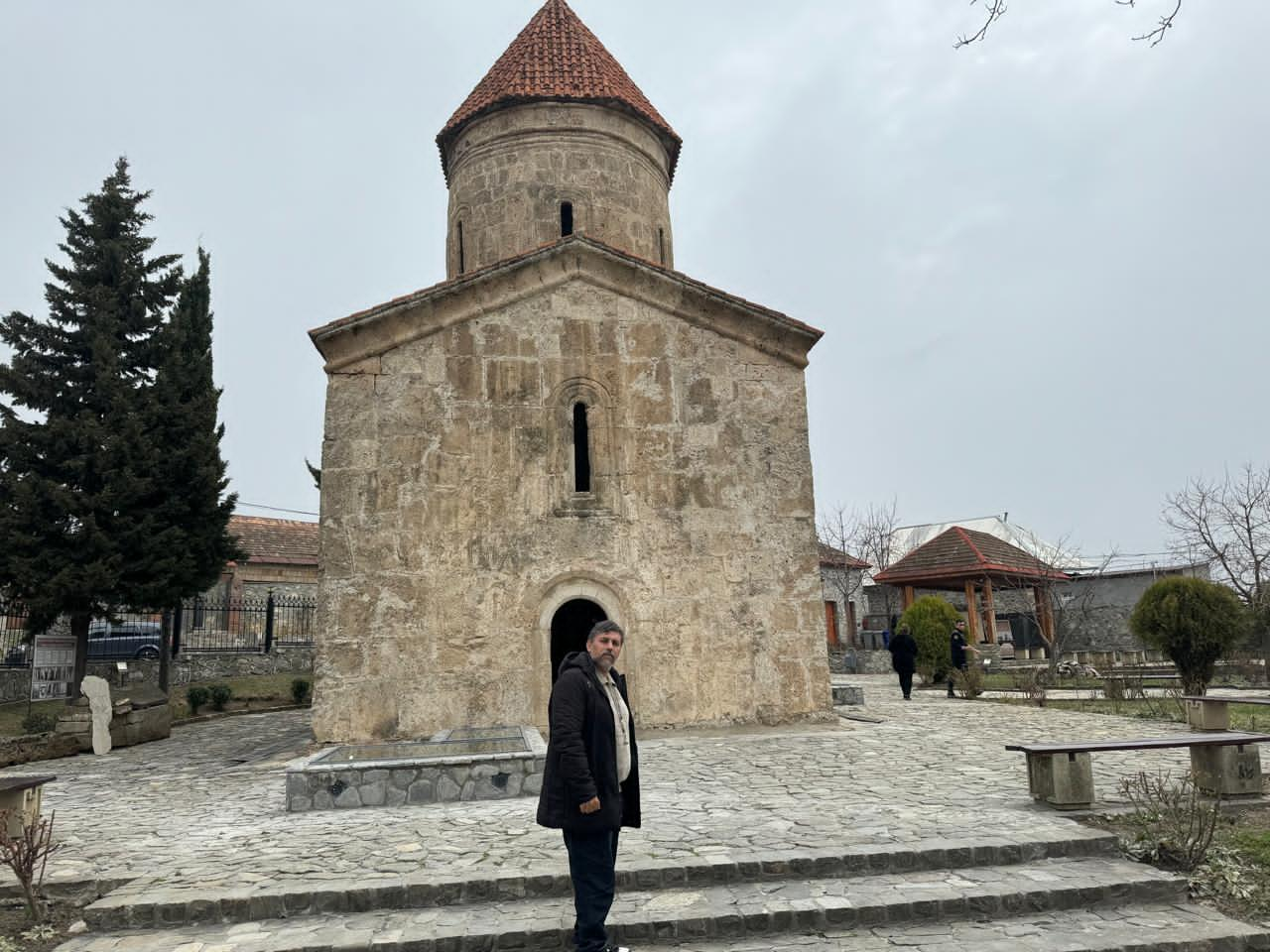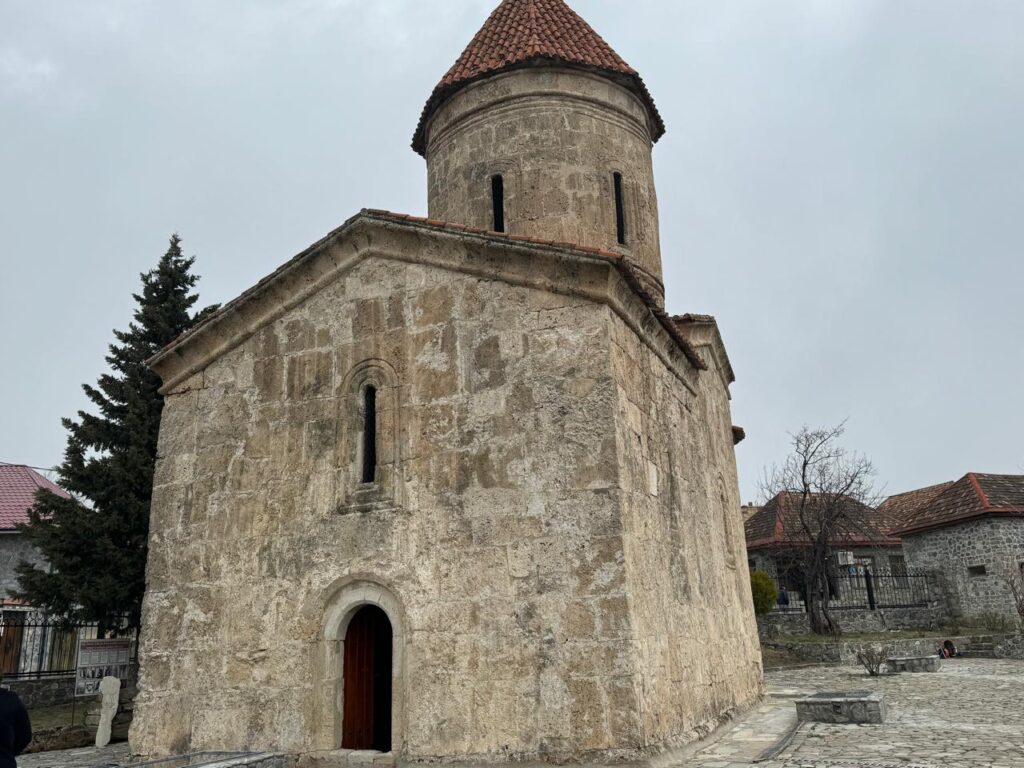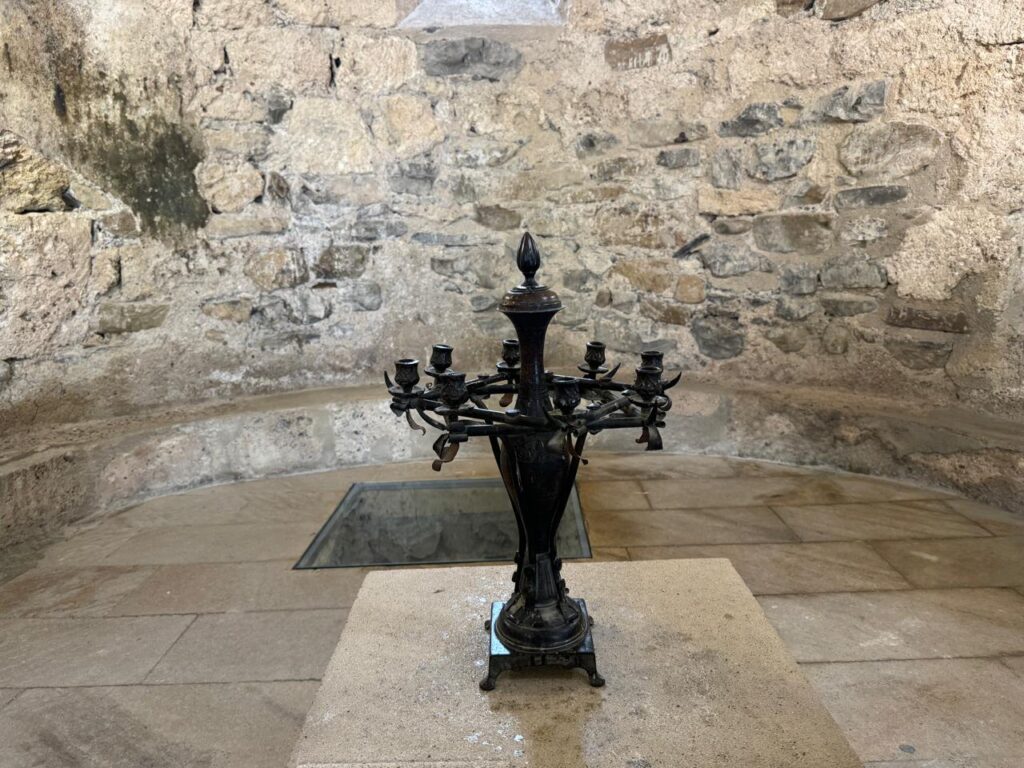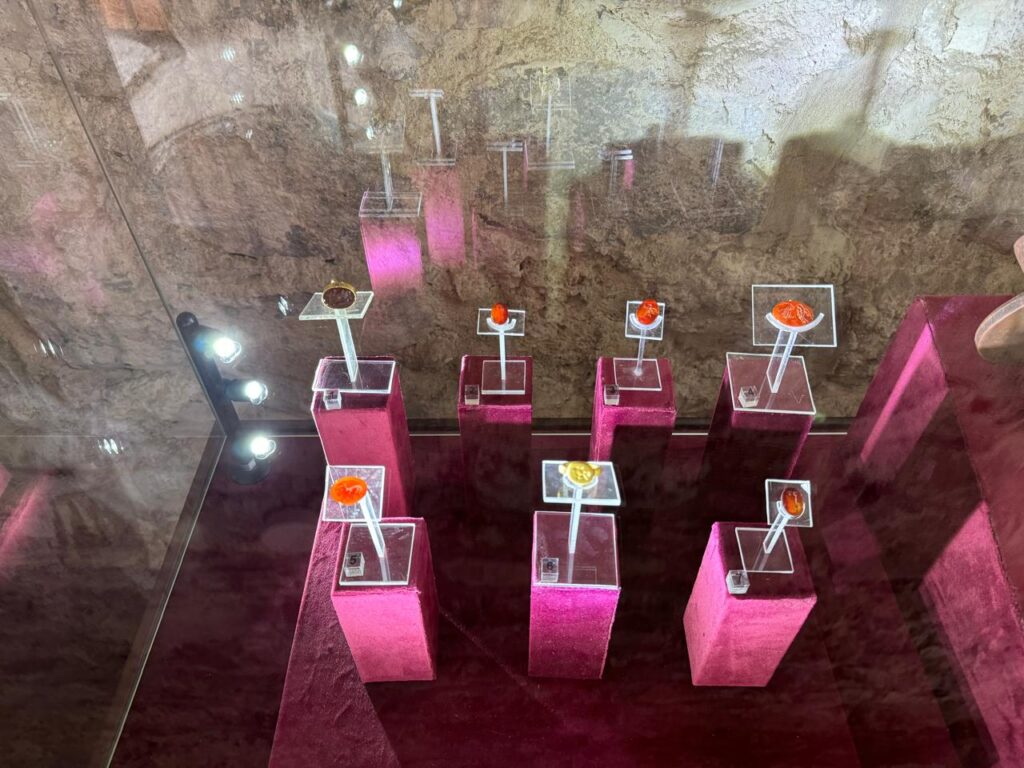Mother Church of Caucasian Albania

The Kish Church, also known as the Albanian Church of the Caucasus, is often referred to as the “Mother Church of Caucasian Albania,” a region that includes parts of modern-day Azerbaijan. Located in the enchanting area of Sheki near the city of Shamakhi, Azerbaijan, this ancient architectural gem is a valuable addition to the great cultural heritage of the Caucasus. This magnificent 12th-century church is not only a masterpiece of architecture but also evidence of the Christian religious and cultural landscape in medieval Azerbaijan. Surrounded by lush landscapes and the majestic Caucasus Mountains, the Kish Church offers visitors a serene and captivating environment to explore the history and spirituality of this unique region. With its impressive dome, beautiful arches, and intricate stone carvings, the Kish Church is a splendid symbol of religious tolerance and the cultural heritage of the Caucasus. Observing its timeless beauty and historical significance provides tourists with an incredibly fascinating experience.

The church’s origins date back to the 1st century AD, making it an early center of Christianity in the region. Some claim it might be the oldest church in the world, boasting a history of two thousand years. Its architecture is quite unique, reflecting early Christian architectural styles in the Caucasus region. Primarily constructed from local stone, the church is characterized by its solid and robust form. The exterior walls are generally plain but adorned with beautiful carvings and decorations, showcasing the craftsmanship of the time. The use of stone not only provided durability to the building but also lent it an enduring aesthetic that harmonizes with the natural surroundings of Sheki.

Inside, the church is relatively modest but exudes a sense of tranquility and spiritual maturity. The interior is simple, with a pathway leading to the altar. In ancient times, the walls might have been adorned with frescoes and religious icons, many of which have deteriorated or been lost over time. The church has two floors; the lower floor has yielded tombs and skeletal remains, which have been preserved as found. During excavations, rare Christian artifacts were discovered and placed in glass boxes. The courtyard walls feature niches where relics found during the excavations are preserved and displayed in glass cases. The skeletal remains discovered during the excavations are also preserved in their original locations within glass boxes, highlighting the church’s antiquity. In some Albanian churches, including the one in Sheki, a dome or semi-dome prominently crowns the central nave, a common architectural element in early Christian churches. The overall impression of the building is enchanting.

A few individuals from this community still reside in the village, although most have integrated into the Azeri culture. However, a few remain. This church has been inactive since 1900, and in 2000, a Norwegian archaeological company, in cooperation with the Azerbaijani government, restored the church and opened it to tourists. Radiocarbon analysis of various artifacts found on the site revealed that the cultural layer beneath the church’s altar dates back to approximately 3000 BC, while the construction of the current church building is dated to the 12th century, between 990-1160 AD. Although the current church building cannot be said to date back to the time of Saint Eliseus, archaeological evidence suggests that the church is located on an ancient cultural site. Its preservation is crucial for understanding the early Christian history of the Caucasus.

